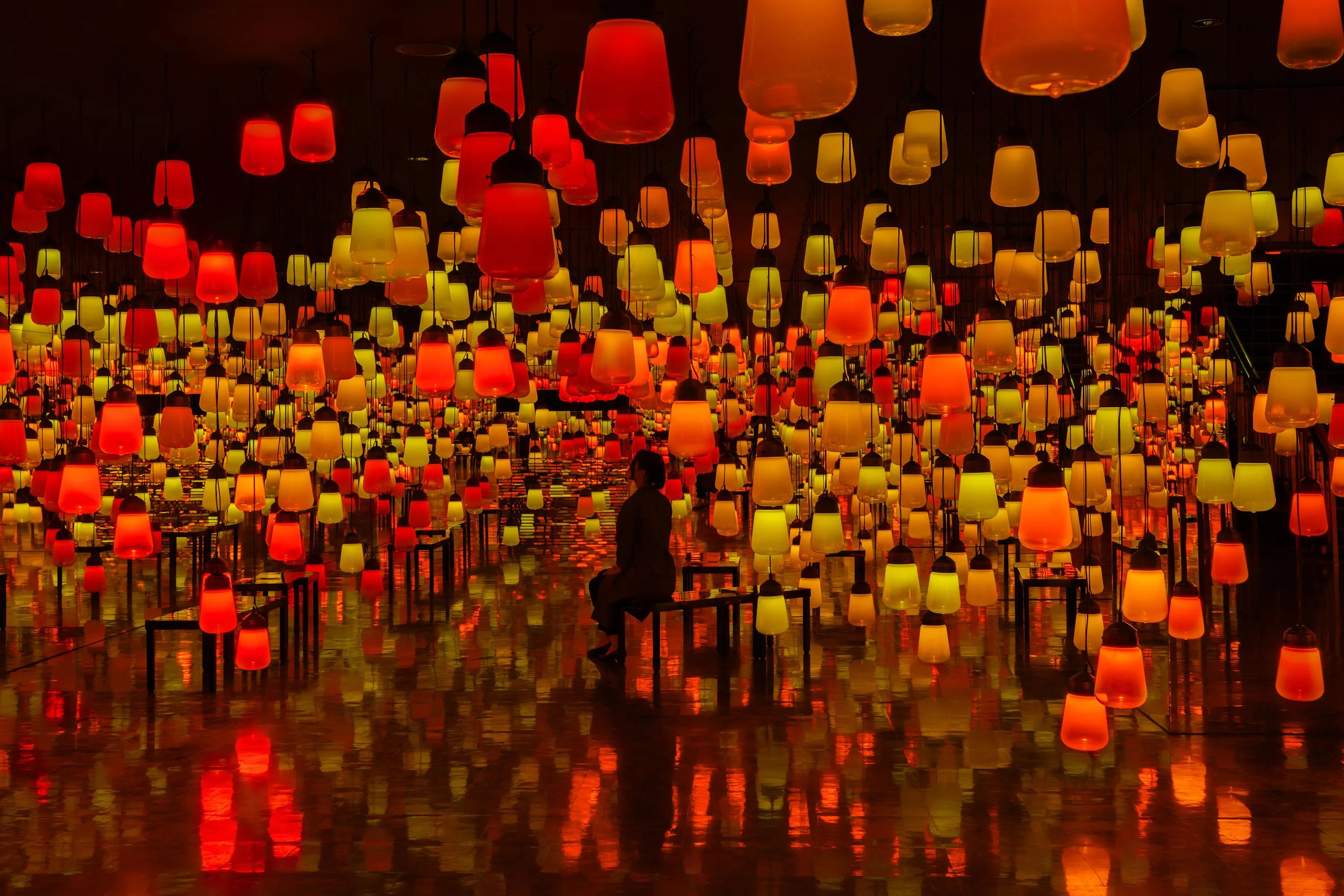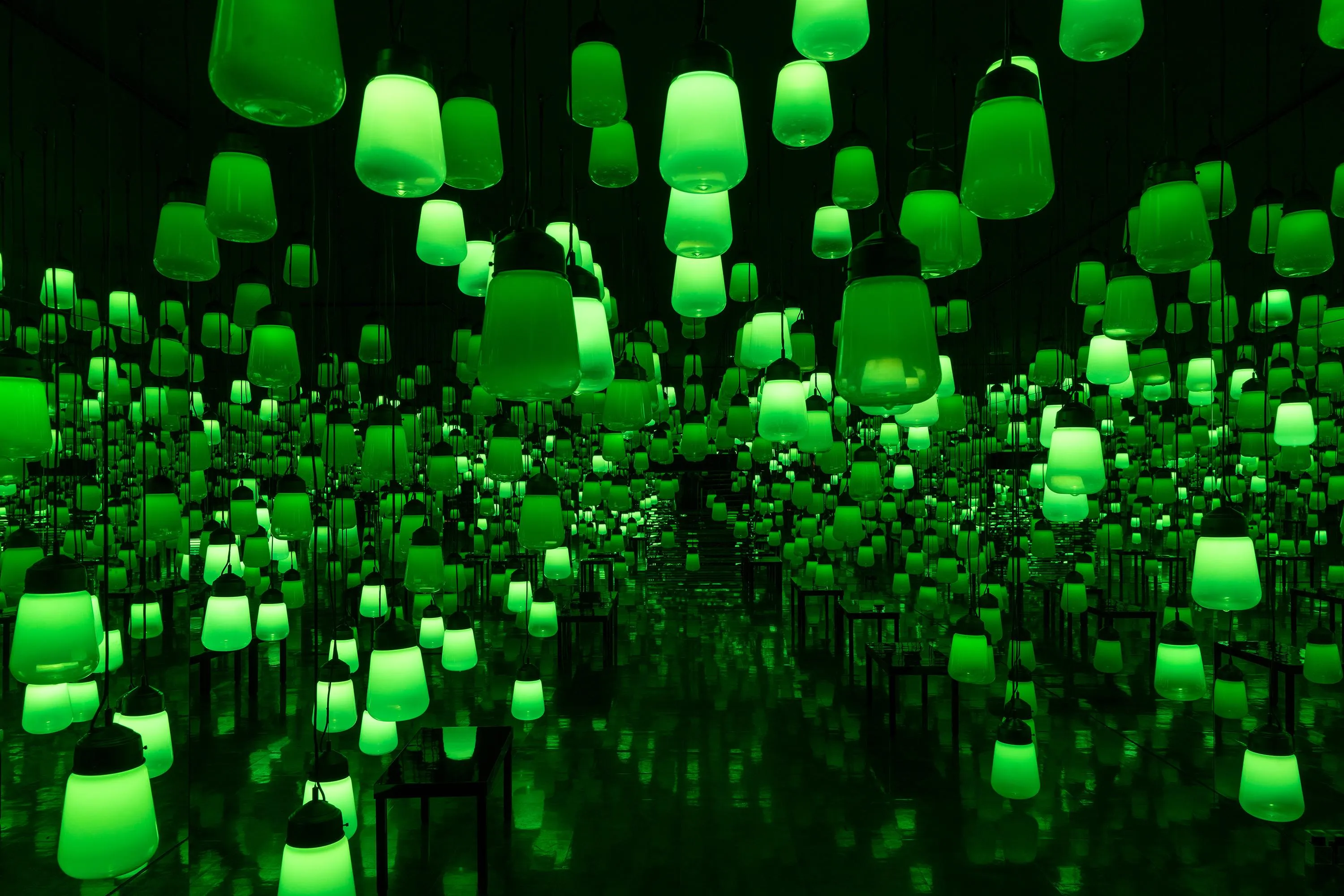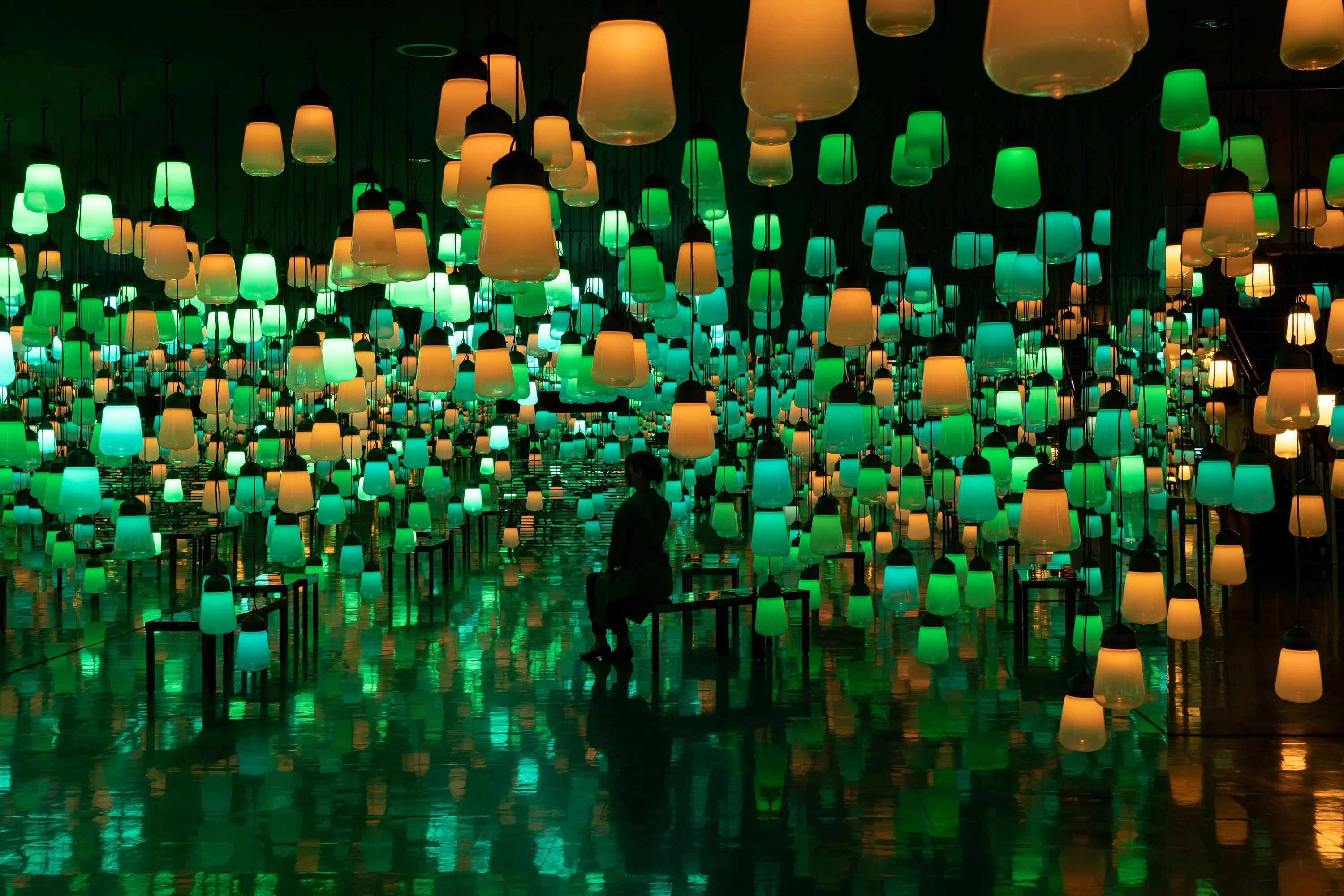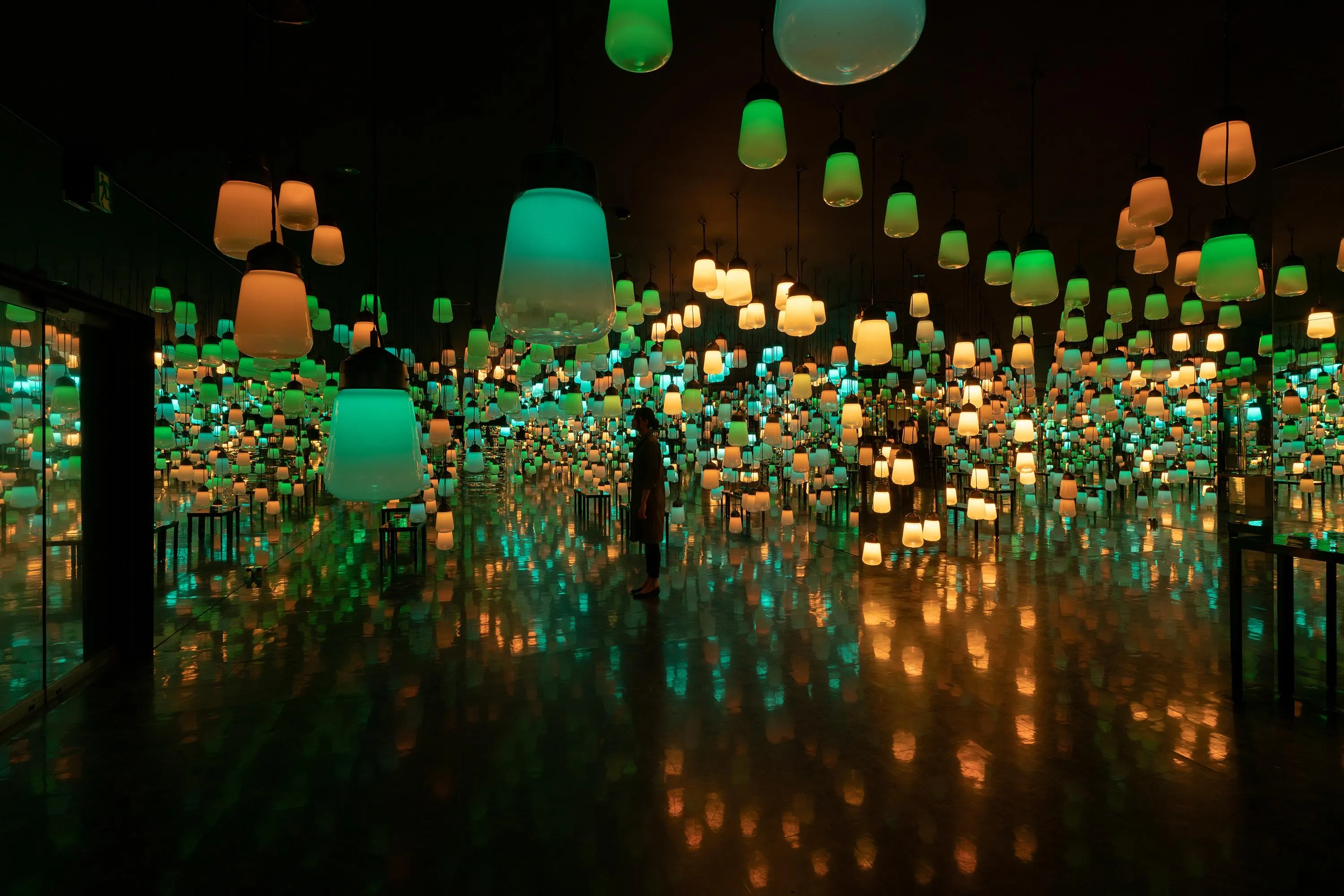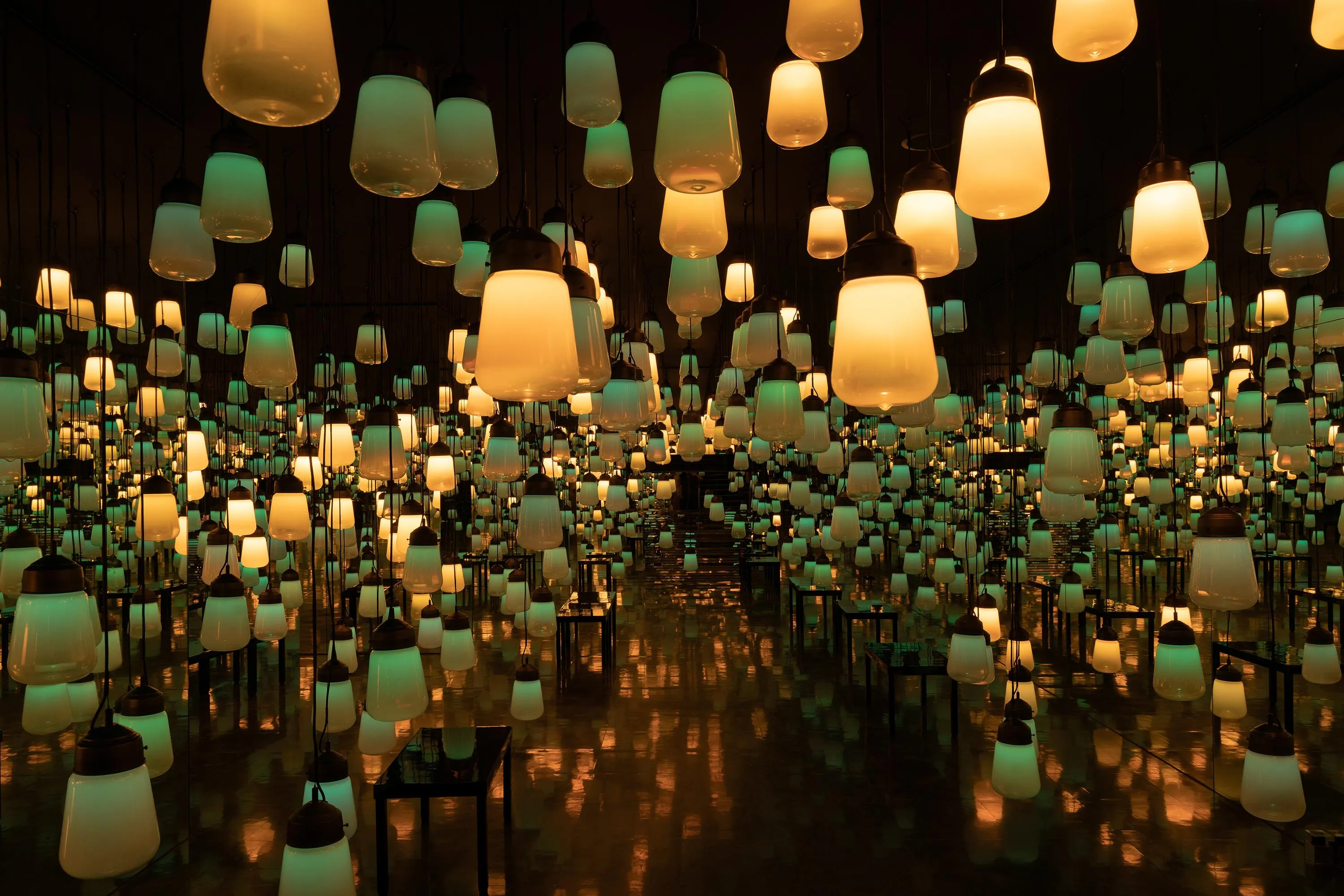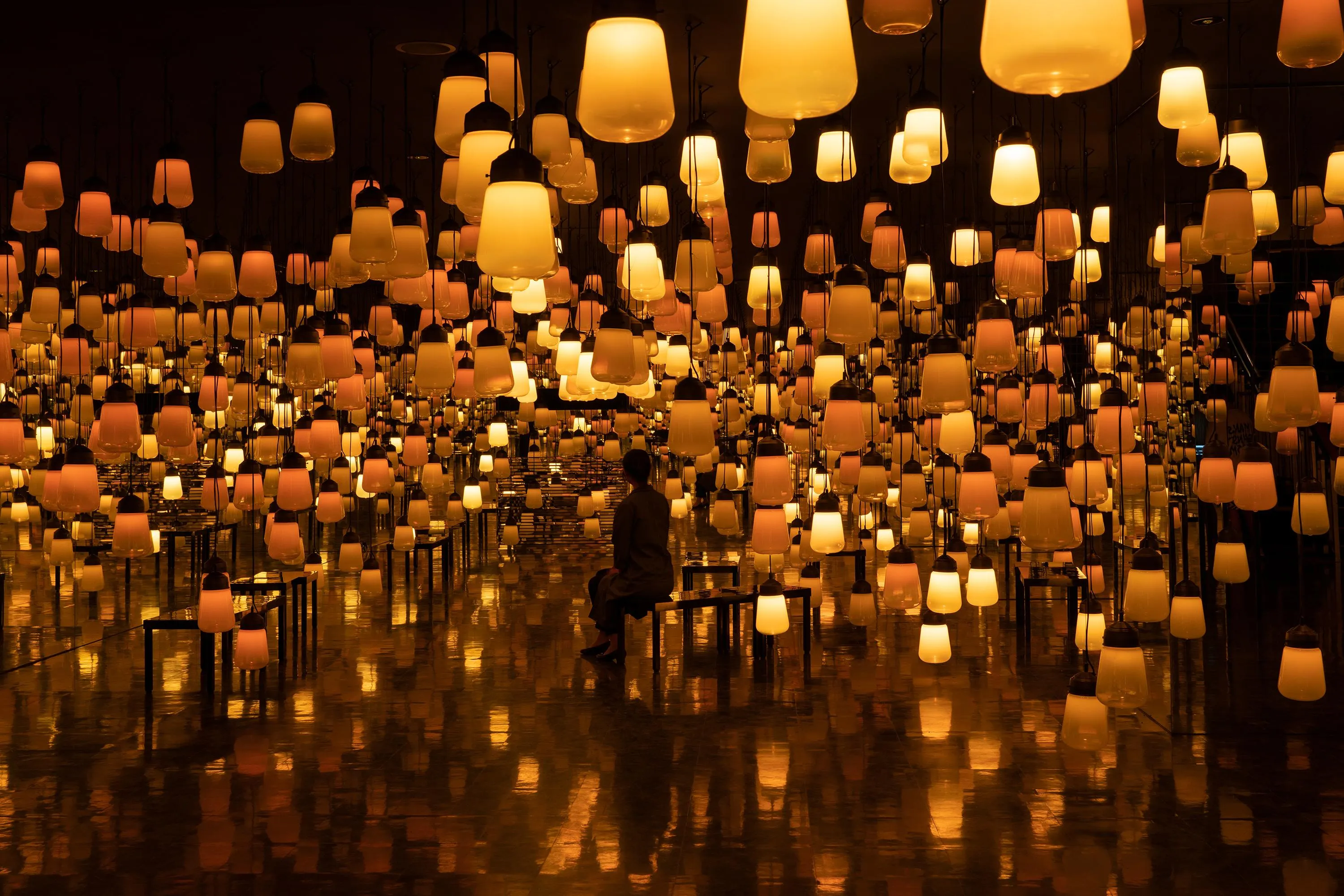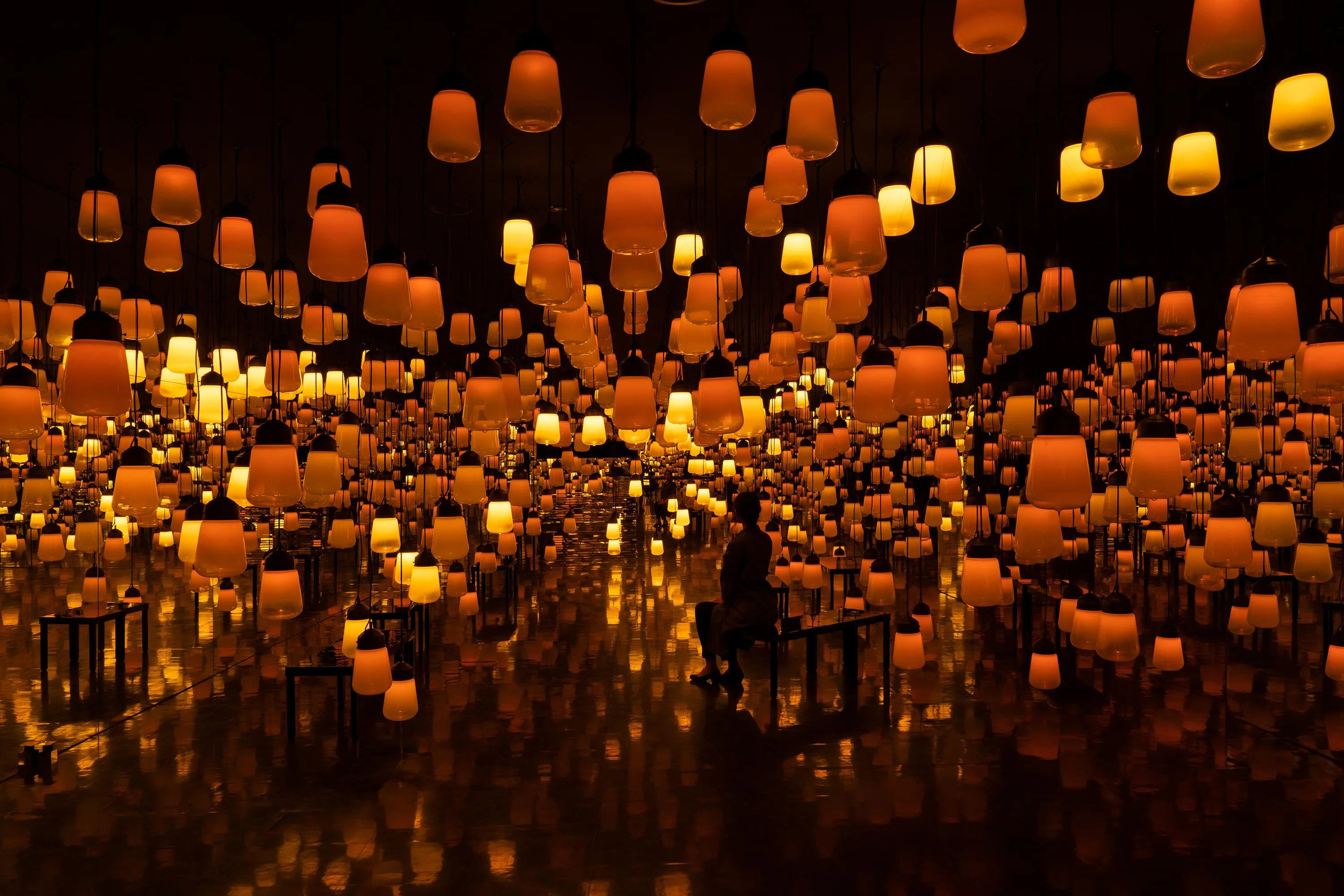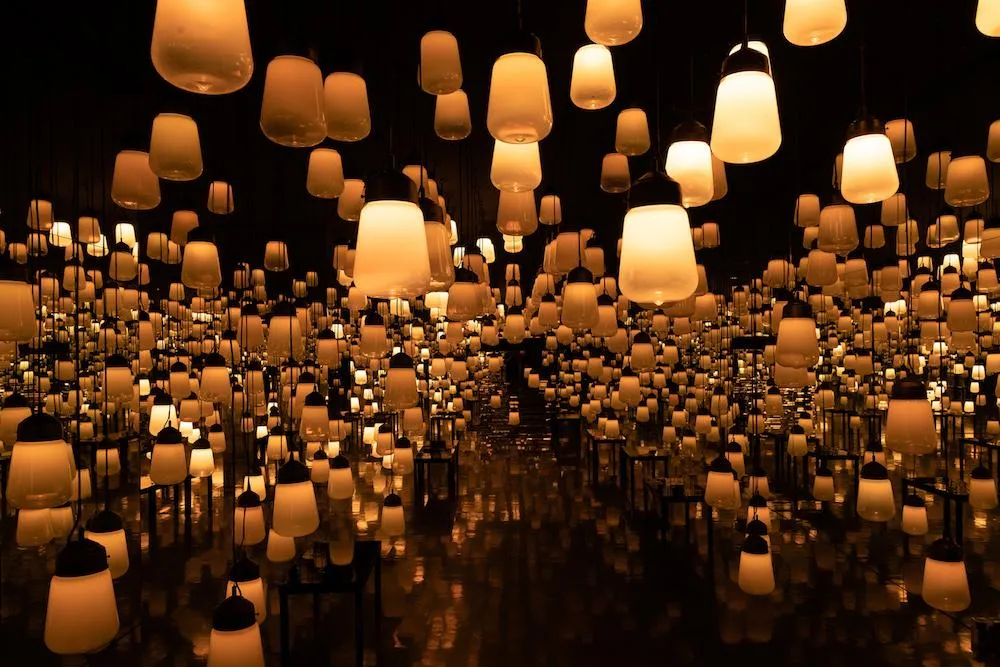Forest and Spiral of Resonating Lamps: One Stroke - Autumn Mountain
teamLab, 2018, from the series Forest of Resonating Lamps: One Stroke, 2016-, Interactive Installation, Endless, Sound: Hideaki Takahashi, Production Support: Hirohito Saito (OryZa Design), Shinya Yoshida (SYD INC.)

